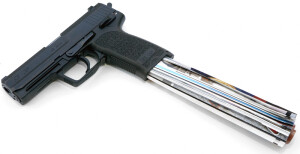 For my first post, I will explain why “high-capacity” magazine bans are not only illogical, but also result in the exact opposite result of the desired goal. Assuming, that is, that the desired goal is to limit the killing power of psychopaths determined to kill innocent people en masse.
For my first post, I will explain why “high-capacity” magazine bans are not only illogical, but also result in the exact opposite result of the desired goal. Assuming, that is, that the desired goal is to limit the killing power of psychopaths determined to kill innocent people en masse.
First, let me get this out of the way: Many modern firearms are designed to use magazines with a high number of rounds. The capacity of a military force, unit, or weapons system to deliver gunfire to a target is called firepower, and when it comes to deadly conflicts, more firepower is usually better.
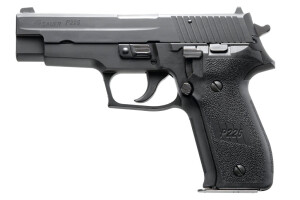 Guns like the Sig Sauer P226 were designed to hold 15 rounds, and with modern magazines, they are capable of holding 18 rounds. The first Glock handgun, the model 17, was designed to hold 17 rounds in the magazine. Simple logic dictates that a 17-round magazine that is built for a handgun designed to hold 17 rounds is a standard-capacity magazine. A magazine that holds 30 rounds and is made to fit into the same gun would be a high-capacity magazine.
Guns like the Sig Sauer P226 were designed to hold 15 rounds, and with modern magazines, they are capable of holding 18 rounds. The first Glock handgun, the model 17, was designed to hold 17 rounds in the magazine. Simple logic dictates that a 17-round magazine that is built for a handgun designed to hold 17 rounds is a standard-capacity magazine. A magazine that holds 30 rounds and is made to fit into the same gun would be a high-capacity magazine.
The AK-47 and its many legal semi-automatic variants were designed to use a 30-round magazine. In this case, a 40-round magazine would be a high-capacity item. What most people who have no experience with guns don’t realize is that ammo is heavy, and 40 rounds of ammo make the rifle unwieldy.
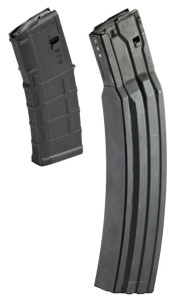 Words have meanings, and when those meanings are altered by politicians in an effort to demonize guns and their owners, it smacks of propaganda. There are companies out there that make 100-round magazines for AR-15s (designed for 20 and 30-round magazines). The image to the right shows a standard-capacity 30-round magazine next to a high-capacity 100-round magazine on the right, and yes, they are to scale.
Words have meanings, and when those meanings are altered by politicians in an effort to demonize guns and their owners, it smacks of propaganda. There are companies out there that make 100-round magazines for AR-15s (designed for 20 and 30-round magazines). The image to the right shows a standard-capacity 30-round magazine next to a high-capacity 100-round magazine on the right, and yes, they are to scale.
Many states limit magazine capacity to 10 rounds. That means that regardless of the design of the gun, the magazine can legally hold only 10 rounds. Why 10? I have no idea. That number seems pretty arbitrary to me. New York State recently passed a law that allows you to have 10-round magazines, but you can only put seven rounds in them. How that is anything but delusional is beyond me, but I didn’t write the law.
So what’s the big deal?
I generally detest statistics, especially polls, but I’m going to use a newspaper widely accepted to have an anti-gun bias as my source: the New York Times.
In this article from 2008, the Times reported the following:
The average number of bullets fired by each officer involved in a shooting remained about the same over those 11 years even with a switch to guns that hold more bullets — as did officers’ accuracy, roughly 34 percent. This figure is known in police parlance as the “hit ratio.”
The hit ratio for New York police over an 11-year period was 34 percent. The article also says that Los Angeles police had a hit ratio of 29% in 2006. But these numbers are for shootings, not gunfights. The article had this to say about gunfights involving police in New York City:
While officers hit their targets about a third of the time over all, far fewer bullets generally found their mark during gunfights. In 1999, only 13 percent of bullets fired during a gunfight were hits.
By contrast, in 2006, 30 percent of the shots fired during gunfights were hits, an unusually high percentage. That year, a total of 19 officers fired their weapons in 13 separate gunfights.
Thirteen percent! That is not a lot of hits by any standard.
Let’s assume for a minute that I have similar training to the police (many police departments have surprisingly low firearms training requirements). If an armed intruder comes into my house with intent to do harm, after shooting at him 10 times, with those odds I will have hit him 1.3 times (on average). Let’s take the high road and assume that I could hit 30% of the time. Now I have three chances in 10 of hitting my attacker. That’s good enough, right? Probably not.
 Guns are not magic death-rays. Just because someone gets shot does not mean that they will stop attacking. Hitting someone in the earlobe is a hit, but it’s not a good hit. Hitting a drug-crazed attacker may not slow them down, and hitting them superficially (also a hit) may just enrage them further. Additionally, there are many variables. What if the attacker is wearing body armor? What if he is extraordinarily muscled? What if he’s really skinny? What if my gun shoots a smaller, weaker caliber? What if the person defending herself is the gun-owner’s spouse who doesn’t practice more than once or twice a year? Guns don’t work they way they do in TV and movies, and they don’t stop an attack every time.
Guns are not magic death-rays. Just because someone gets shot does not mean that they will stop attacking. Hitting someone in the earlobe is a hit, but it’s not a good hit. Hitting a drug-crazed attacker may not slow them down, and hitting them superficially (also a hit) may just enrage them further. Additionally, there are many variables. What if the attacker is wearing body armor? What if he is extraordinarily muscled? What if he’s really skinny? What if my gun shoots a smaller, weaker caliber? What if the person defending herself is the gun-owner’s spouse who doesn’t practice more than once or twice a year? Guns don’t work they way they do in TV and movies, and they don’t stop an attack every time.
Take this real-world example where a woman shot a home invader five times. Her hit ratio was a fantastic 83% (5 out of 6 rounds fired), after which the attacker was still well enough to leave the scene, get into his car and drive away.
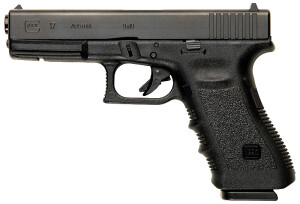 If that was you in the attic protecting your two 9-year-old children, would you want to run out of ammo? Would you want to have to reload? Wouldn’t you want any advantage you could get over the person coming to rape or kill you and your children? Why would you voluntarily give up that advantage? More to the point, why would you allow your government to take that advantage away from you?
If that was you in the attic protecting your two 9-year-old children, would you want to run out of ammo? Would you want to have to reload? Wouldn’t you want any advantage you could get over the person coming to rape or kill you and your children? Why would you voluntarily give up that advantage? More to the point, why would you allow your government to take that advantage away from you?
And what about the worst-case scenario? What if that woman was attacked by more than one assailant? If there had been two men instead of one, who knows how things might have turned out? Criminals like to travel in packs because it gives them an advantage. Laws that limit how many rounds of ammunition you and I can have loaded in our guns take away our advantage of firepower. Since criminals, by definition, ignore the law, this gives them an advantage.
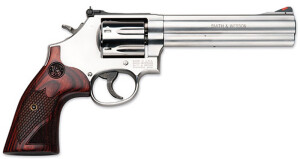 If you knew that a pair of large, strong men were breaking down your door with intent to rape and possibly kill you, given the choice between a 7-shot handgun and a 17-shot handgun of equal caliber and power, which would you choose? Assuming they were the same caliber and you knew how to operate them both, you would be a fool to choose the lesser-equipped weapon. “High-capacity” magazine laws would send you to jail for saving your child’s life with the 17-round handgun. That is not what America is supposed to be about.
If you knew that a pair of large, strong men were breaking down your door with intent to rape and possibly kill you, given the choice between a 7-shot handgun and a 17-shot handgun of equal caliber and power, which would you choose? Assuming they were the same caliber and you knew how to operate them both, you would be a fool to choose the lesser-equipped weapon. “High-capacity” magazine laws would send you to jail for saving your child’s life with the 17-round handgun. That is not what America is supposed to be about.
Ask yourself this question: If magazine limits are such a good idea, why are the police almost always exempt from these laws? I’ll tell you why: because the police don’t want to give up their advantage of firepower when confronting dangerous attackers. I don’t want to give up any advantages either, especially when considering the safety and protection of my family. Apparently, though, my children’s lives aren’t worth as much as a police officer’s, at least in the eyes of these lawmakers.